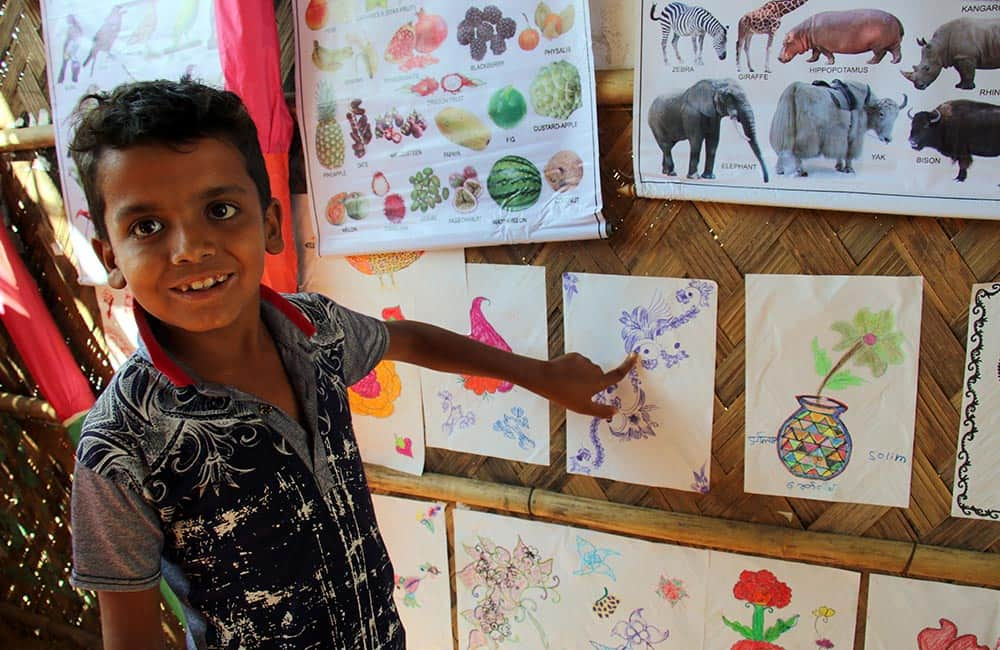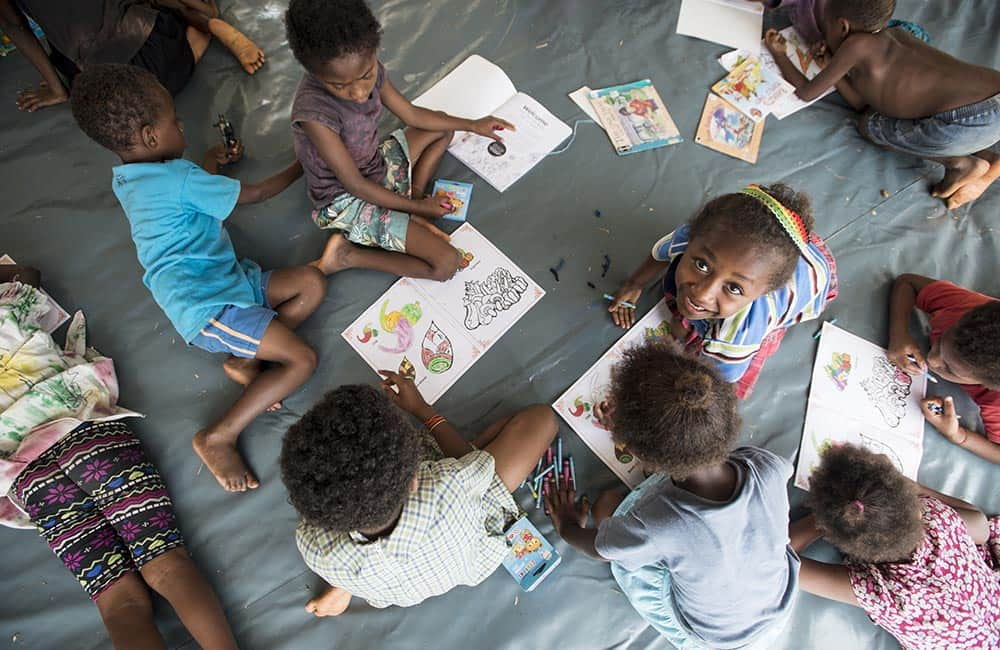A safe haven for children, in the middle of chaos and disaster
A disaster turns a child’s life upside down. Whether it’s a volcanic eruption and tsunami in Tonga, conflict and displacement in Ukraine, or floods and fires in Australia, emergencies can be a scary time for kids.
They can find themselves living miles away from where they grew up. Often, they will have seen death and destruction. Their home might be replaced with a tent and their school might be a distant memory. Their whole life, for now at least, completely changed.
So, what do we do to help them cope with what they’re going through?
A Child Friendly Space is their safe haven
Setting up and running Child Friendly Spaces is one of our most important activities in emergencies. As well as providing the food, water and materials to build temporary shelters – the type of work that immediately comes to mind when thinking about a crisis – your support also helps us set up Child Friendly Spaces to look out for the specific needs of children.
It’s vital that children have a place where they can feel safe, play, and keep hold of their childhood.
The impact of disasters on children
Children can go through different phases of emotion in a crisis. They need different support at each stage.
At the start of an emergency, when their lives are thrown into turmoil, children may feel shock, numbness and confusion. In this phase, we identify children who may need additional support and give reassurance and comfort, known as Psychological First Aid, culturally appropriate grieving rituals, access to information on the disaster and the associated relief efforts and refer them to specialised services, if needed. We also provide care for children who have been separated from their families and try to trace their families.

In the weeks following an emergency, once life-saving operations are in place, children may begin to feel intense grief, horror, anger or mood swings as what happened really begins to sink in. They need productive activities at this point and a safe environment to process distressing events.
In the third phase, from about three to four weeks after the start of the emergency, their losses begin to really hit home. They try to understand the sequence of events and how it will affect the family future. If they are not given support, this is when children might try and isolate themselves.
What’s important is that we – and you – are there for them. That they don’t have to face all this alone. Together, we can provide a safe, welcoming place and activities that will help them deal with and recover from what they’ve been through.
What happens in a Child Friendly Space?
Lots of activities taken place in a Child Friendly Space! Each of them with a specific purpose. The activities help children express themselves, build confidence or interact with other kids. It’s also a chance for them to simply have some fun.

Here are just a few of the activities that might take place in Child Friendly Space:
- Drawing and painting
- Singing and dancing
- Sports like volleyball, football and traditional children’s games
- Puzzles and board games
- Story time
When children are participating in activities in a Child Friendly Space, it gives parents and caregivers time to attend to their daily activities without worrying for their children’s safety. It also gives them space to process what they’ve been through too.
The importance of Child Friendly Spaces, from those who know best
We spoke to children who have used our Child Friendly Spaces, and staff who manage them, to get their views on what makes them so important: